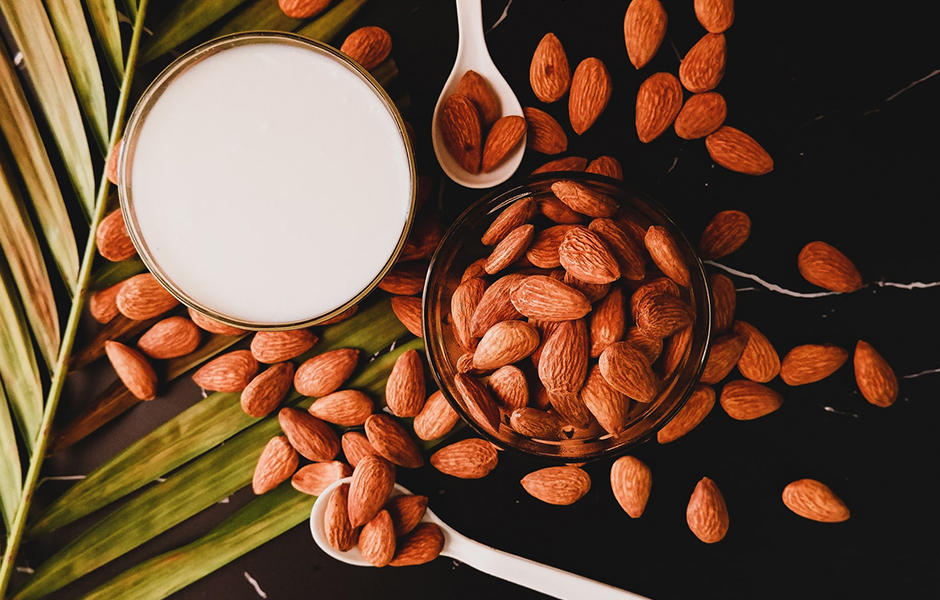Milk alternatives are getting more popular with each passing year. The demand for plant-based milks has increased by 10% over the past two years alone, representing a massive change in consumer consumption. The most consumed milk being Soya, followed closely by oat milk, with shoppers buying £36 million worth just last year alone. Developing and understanding these milks will help to create high-quality, consistent beverages for your customers, which is sure to be appreciated. In this blog, we’ll be talking about how to use plant-based milks to their full potential on your espresso machine.
How to Steam Plant Milks
Alternative milks and animal milks have a variety of chemical differences. For this reason, they tend to be prepared differently in coffee shops. Using plant milks that are designed specifically for Baristas will help create better coffee due to them having stabilisers within them to prevent it from ‘curdling’. This makes it so both the texture and visual appearance of the beverage are kept to a high quality, ensuring the milk is steamed correctly. Milks with a higher fat content will have a more stable texture after steaming. Oat milk tends to be the preferred choice for baristas due to its canola oil which helps with foaming and texture.
Soy Milk
Due to the high protein content in soy milk, it can stretch or aerate very well. This is due to the protein molecules surrounding air bubbles, making this alternative easy to foam. Due to this protein, it steams twice as quickly as cow’s milk. Soy milk is very temperature resistant so steaming as high as 65°C will create a microfoam perfect for latte art. When steaming, try not to incorporate too much air as this will result in too much foam.
.jpg)
Almond Milk
Almond milk has a lower protein level than soy milk, therefore it doesn’t steam or foam as well. Almond milk has a watery consistency that creates a thinner layer of microfoam. It struggles at high temperatures so keeping it around 55°C is crucial for it to be at its smoothest. Incorporating more air at the beginning of steaming will help improve the milks texture.
Coconut Milk
Coconut milk is high in fat but low in protein. Creating a microfoam for lattes can be tricky. However, its high sugar level means it can often create a thicker texture once steamed. Coconut milk can get thick and stiff above 65°C so be careful when heating it.
Oat Milk
Oat milk is low in protein meaning it needs a longer steaming time than cow’s milk to create the perfect foam for lattes. Oat milk is more flexible when it comes to texture, being able to withstand higher temperatures. By adding more air when streaming, you can also produce a more consistent and smooth texture than many other dairy-alternative milks.
Do Different Milks Taste and Feel Different?
The variety of ingredients in these plant-based milks mean they will add different tastes and textures to coffees, hot chocolates and matcha. The main factors that influence taste and texture for plant-based alternatives include temperature, coffee intensity and any additional ingredients you add to the drink.
Soy milk provides a creamy consistency and provides a longer-lasting aftertaste. The flavour is bean-like and nutty. Blending soy with medium roast coffee won’t overpower the coffee.
Almond milk has a thin layer of microfoam in which can result in a less substantial mouth feel. It tends to have a lingering, bigger aftertaste which often masks the flavour of your coffee. For this reason, it’s important to ensure your milks aren’t going to overpower the centrepiece of your hot drinks – the coffee.

Coconut milk has a similar effect but masks a more delicate flavour to the coffee. Coconut milk is best suited for stronger flavour coffees. For example, dark, chocolatey roasts, cold drinks or hot chocolates.
Oat milk has a light gentle flavour and puts the coffee flavour first so is well suited for lighter roasts. The creamy texture and neutral aftertaste allow the coffee’s strengths shine through. Hence why it is barista’s preferred milk alternative.
Through using a wide range of plant-based milks, your café will be able to cater for a variety of customers and their tastes. It won’t just increase customer interest and satisfaction but it’s also a great way to home in on your barista skills. Next time you reach for the oat or almond milk, perhaps consider one of the alternatives above. You might be surprised by the results.



